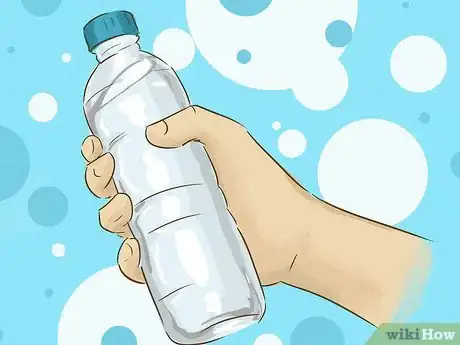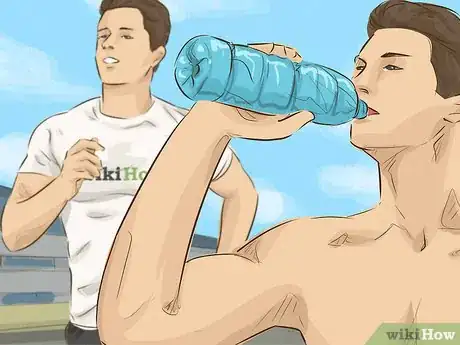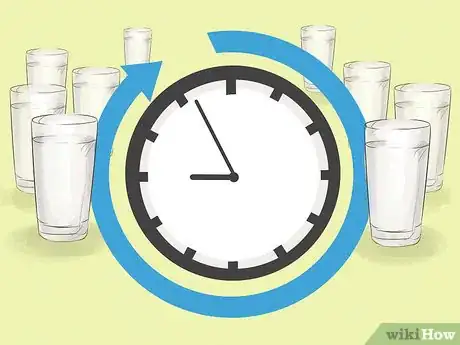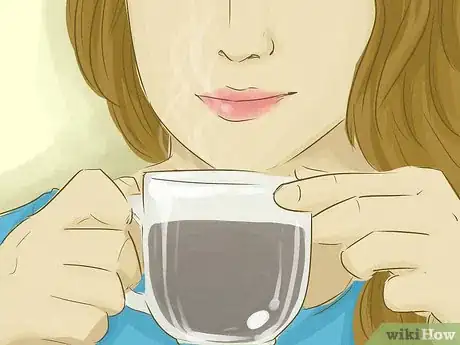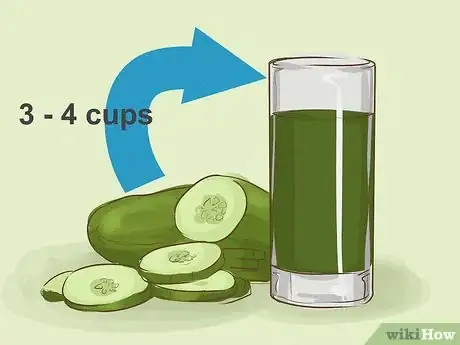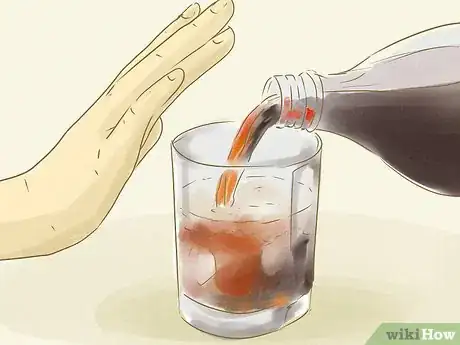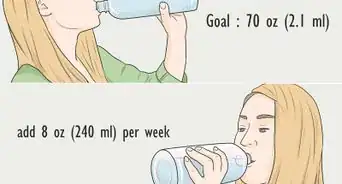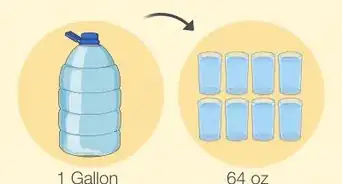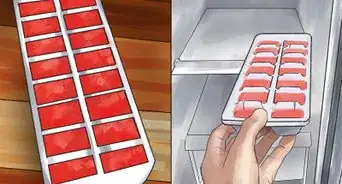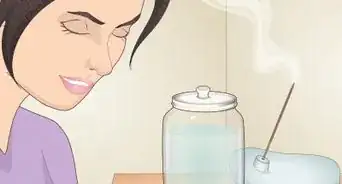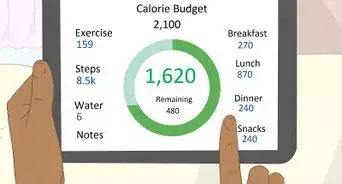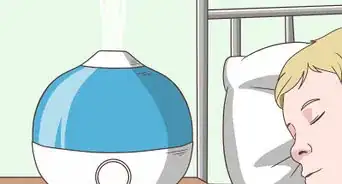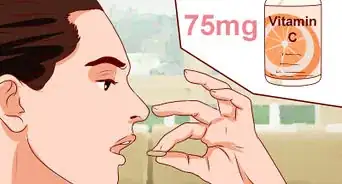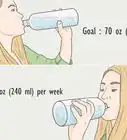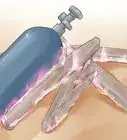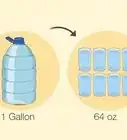This article was medically reviewed by Sarah Gehrke, RN, MS. Sarah Gehrke is a Registered Nurse and Licensed Massage Therapist in Texas. Sarah has over 10 years of experience teaching and practicing phlebotomy and intravenous (IV) therapy using physical, psychological, and emotional support. She received her Massage Therapist License from the Amarillo Massage Therapy Institute in 2008 and a M.S. in Nursing from the University of Phoenix in 2013.
There are 11 references cited in this article, which can be found at the bottom of the page.
wikiHow marks an article as reader-approved once it receives enough positive feedback. In this case, several readers have written to tell us that this article was helpful to them, earning it our reader-approved status.
This article has been viewed 307,021 times.
Drinking water is an important key to staying hydrated and healthy. While individual needs vary, such as sex and lifestyle, the Institute of Medicine recommends women (aged 19-50) drink 2.7 liters (91 oz.) per day and men (aged 19-50) drink 3.7 liters (125 oz.) per day.[1] It can be challenging to reach that goal, but spreading out your water consumption through the day and finding alternative sources of hydration will help you increase your daily fluid intake.
Steps
Spreading out Water Consumption through the Day
-
1Drink a glass of water as soon as you get up in the morning. Drinking water right when you wake up will help jumpstart your metabolism as well as rehydrate you after going all night without any liquids.[2] Keep a glass beside your bed or leave a note on your alarm clock to remind yourself.
-
2Drink water every time you eat. Have a glass of water with each meal. This will aid in digestion by helping to break food down so that your body can absorb nutrients. Water also softens stool and helps prevent constipation.[3] Remember to drink water along with any snacks you have during the day as well.
- If you're hoping to lose weight, drink water before you begin eating in order to feel full sooner.
Advertisement -
3Keep a water bottle with you all day. If you work in an office, keep a bottle on your desk and sip from it throughout the day. Set reminders on your computer if you have trouble remembering. If you work a more physical job, try to find a spot to keep a water bottle where you can access it regularly or just carry it with you.[4]
- For more precise water intake tracking, find a bottle that has measurements marked along the side.
- Try a bottle with special features like insulation to keep the water cold, a built-in filter, or a separate cylinder inside for infusing your water with fruit.
-
4Drink extra water after exercising. An additional 1-2 cups (.25-.5 liters) of water is sufficient following moderate exercise, but intense exercise with excessive sweating may require a sports drink, such as Gatorade or Powerade. These beverages contain sodium, electrolytes, and carbohydrates, which will help replace what you lost through sweat.[5]
-
5Find a water-tracking app. There are several apps available on your smartphone to help you remember to drink more water. The WaterLogged app allows you to track your daily water intake. Others, like OasisPlaces and WeTap, help you find nearby water fountains where you can refill your water bottle for free.[6]
-
6Keep the “8 by 8” rule in mind. Every individual needs a different amount of water to stay healthy. But the “8 by 8” rule (8 ounces, 8 times a day) is easy to remember and can help you easily track your water intake each day.
- Outside the US, this translates to about .25 liters 8 times a day.
Finding Alternative Sources of Hydration
-
1Drink juice, coffee, or tea. Many people believe liquids with caffeine will dehydrate you, but this is not true when they are consumed in moderate amounts. Water is best, but if you prefer other beverages, such as fruit juice or caffeinated coffee and tea, continue drinking those to reach your daily liquid requirements.[7]
- Limit your daily caffeine intake to 2-4 cups of coffee or tea daily. Beyond that, you may experience insomnia, irritability, headaches, or other side effects. Children should avoid caffeine altogether.[8]
- Caffeinated beverages may not be a good source of hydration for those who do not have a developed tolerance to the effects of caffeine. It can be a weak diuretic in the early few days of drinking coffee, but soon tolerance is developed when consumed regularly for 4-5 days, and the diuretic effect disappears.[9]
-
2Eat foods with a high water content. About 20% of your daily water intake comes from food.[10] Watermelon, celery, cucumbers, and lettuce are good, healthy diet choices that help with hydration. Soups and broths are also a good way to sneak more water into your diet.
-
3Use sugarless sweeteners or flavor additives. If you dislike drinking plain water, a variety of products exist that add flavor or sweetness to a glass of tap water. Some are available as powders while others are liquid additives.
- Be sure to read the ingredients of these products. Some contain thickening agents like propylene glycol that are considered controversial.[11]
- If you would prefer something more natural, try cutting up strawberries, lemons, or cucumbers and putting them into your water to infuse it with those flavors.
Expert Q&A
Did you know you can get expert answers for this article?
Unlock expert answers by supporting wikiHow
-
QuestionIs it harmful to drink too much water?
 Sarah Gehrke, RN, MSSarah Gehrke is a Registered Nurse and Licensed Massage Therapist in Texas. Sarah has over 10 years of experience teaching and practicing phlebotomy and intravenous (IV) therapy using physical, psychological, and emotional support. She received her Massage Therapist License from the Amarillo Massage Therapy Institute in 2008 and a M.S. in Nursing from the University of Phoenix in 2013.
Sarah Gehrke, RN, MSSarah Gehrke is a Registered Nurse and Licensed Massage Therapist in Texas. Sarah has over 10 years of experience teaching and practicing phlebotomy and intravenous (IV) therapy using physical, psychological, and emotional support. She received her Massage Therapist License from the Amarillo Massage Therapy Institute in 2008 and a M.S. in Nursing from the University of Phoenix in 2013.
Registered Nurse
References
- ↑ http://www.nationalacademies.org/hmd/Reports/2004/Dietary-Reference-Intakes-Water-Potassium-Sodium-Chloride-and-Sulfate.aspx
- ↑ https://www.usatoday.com/story/news/nation-now/2017/03/14/why-you-should-drink-water-first-thing-every-day/99123938/
- ↑ http://www.mayoclinic.org/healthy-lifestyle/nutrition-and-healthy-eating/expert-answers/digestion/faq-20058348
- ↑ http://www.webmd.com/a-to-z-guides/tc/drinking-enough-water-topic-overview#2
- ↑ https://www.unm.edu/~lkravitz/Article%20folder/WaterUNM.html
- ↑ https://www.business2community.com/mobile-apps/5-smart-drinking-water-apps-for-your-phone-0247472#PqivXMfOzfQ4SAGu.97
- ↑ http://www.webmd.com/a-to-z-guides/tc/drinking-enough-water-topic-overview#1
- ↑ http://www.mayoclinic.org/healthy-lifestyle/nutrition-and-healthy-eating/in-depth/caffeine/art-20045678
- ↑ https://www.ncbi.nlm.nih.gov/pubmed/19774754
About This Article
It can be hard to drink enough water during the day when you're busy, but you can help yourself keep track by drinking a glass of water as soon as you wake up, which will also help jumpstart your metabolism. You should also get into the habit of drinking water with each meal and after exercise, since this will keep you hydrated throughout the day. In general, aim for 8 ounces, or .25 liters of water, 8 times a day, which comes out at 2 liters in total. Keep a water bottle in your bag or on your desk so you always have access to fresh water. If you dislike drinking water on its own, add some chopped up fruit or sugarless sweeteners to give it some flavor. For more tips, including how to increase your water intake by eating certain foods, read on!
-Step-17.webp)

